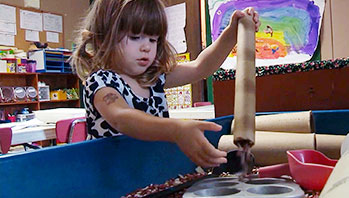- beans
- toy flowerpots
- toy flowers and bulbs
- toy shovels
- dig
- soil
- plant
MA Standards:
English Language Arts/Language/L.PK.MA.6 Use words and phrases acquired through conversations, listening to books read aloud, activities, and play.
MA Draft STE Standards
Life Sciences/From Molecules to Organisms: Inheritance and Variation of Traits/LS1/3.A Describe/draw and compare the body parts of animals (including themselves) and plants they are investigating [System] and explain functions of some of the observable body parts. [Structure and Function]
Head Start Outcomes:
Approaches to Learning/Initiative and Curiosity Demonstrates flexibility, imagination, and inventiveness in approaching tasks and activities.
Logic and Reasoning/Reasoning and Problem Solving Classifies, compares, and contrasts objects, events, and experiences.
PreK Learning Guidelines:
Science and Technology/Life Sciences 10 Observe and identify the characteristics and needs of living things: humans, animals, and plants.
Under the Soil Dig

© Commonwealth of Massachusetts, Department of Early Education and Care. All rights reserved.
Skill Focus: Fine Motor Skills, Listening and Speaking, Vocabulary
Educator Prep: Fill the sensory table and the flowerpots with beans.
Fill the sensory table with beans. “Plant” various bulbs, baggies of seeds, and small sticks under the bean “soil” and have children dig for the plants. Say, There are many plant parts under the bean “soil.” Explain that you want them to dig for the plant parts and sort them into different groups. Encourage children to describe each plant part they dig up.
Adaptation: For groups with older children, you may want to encourage them to “plant” their findings in groups and describe what characteristics are alike about each group.
